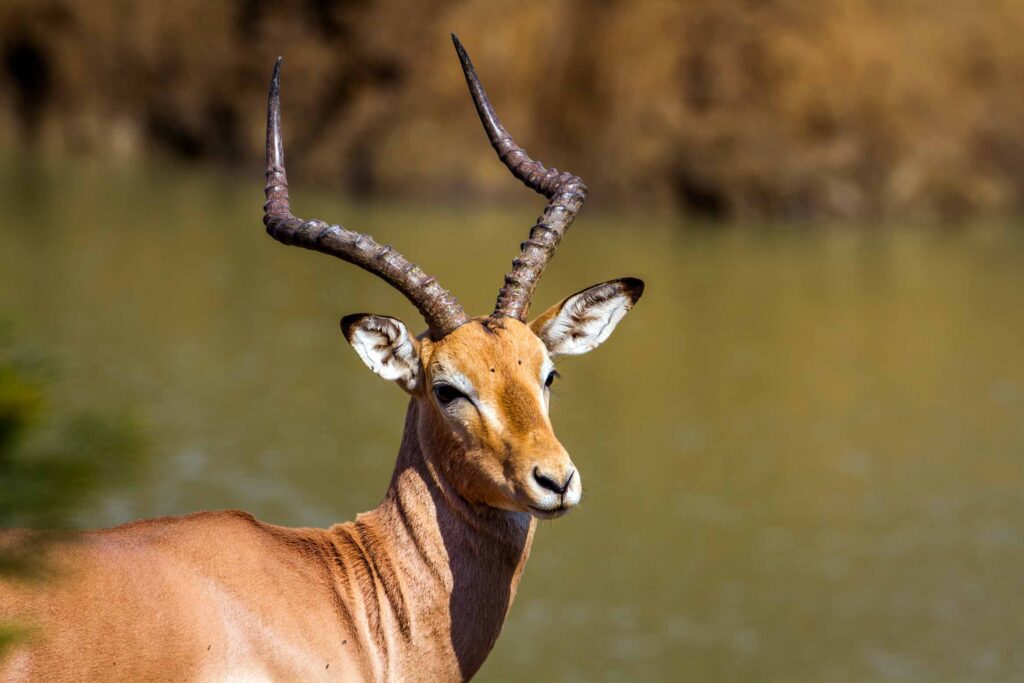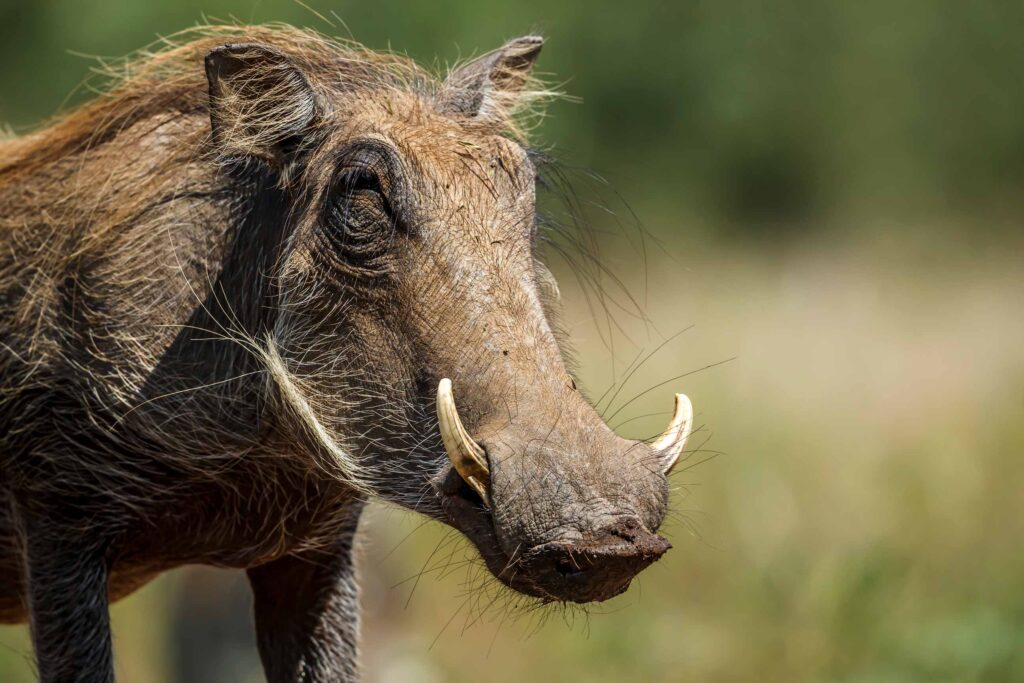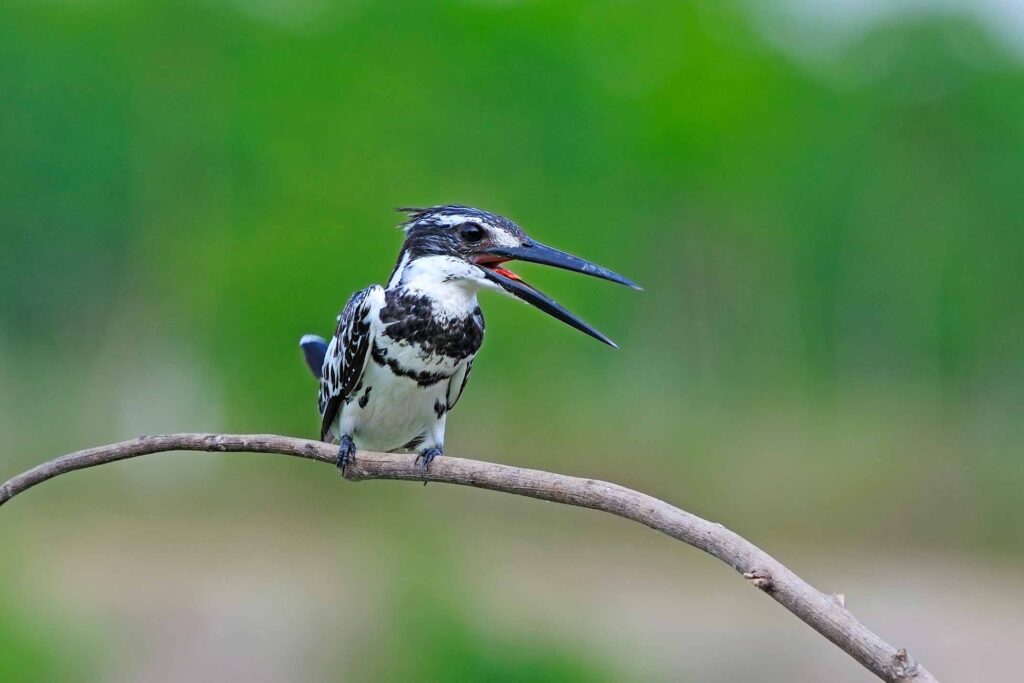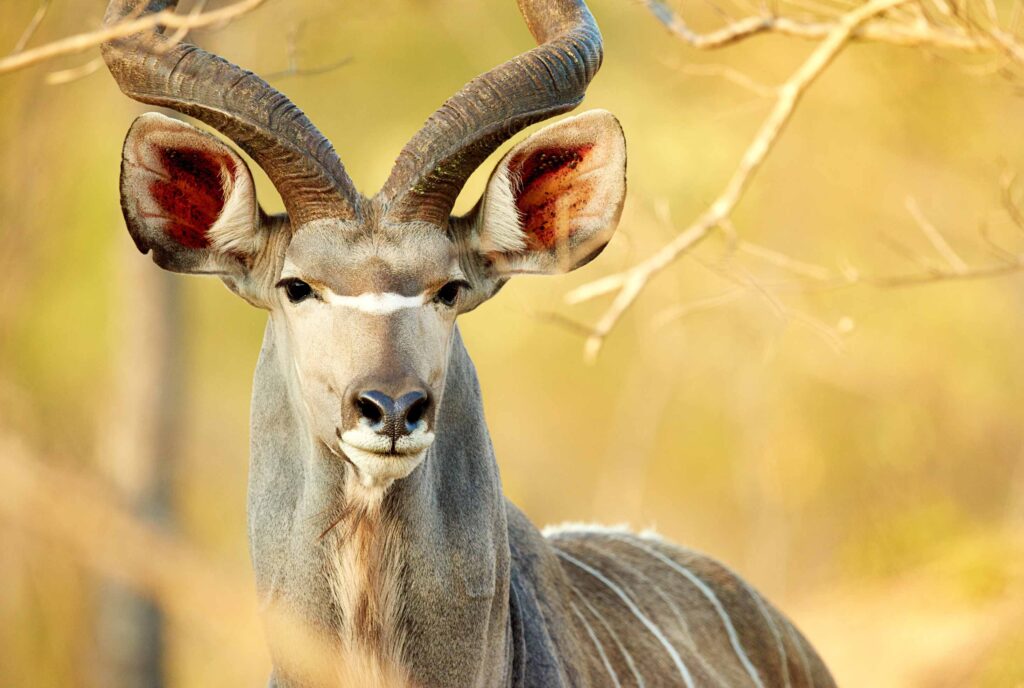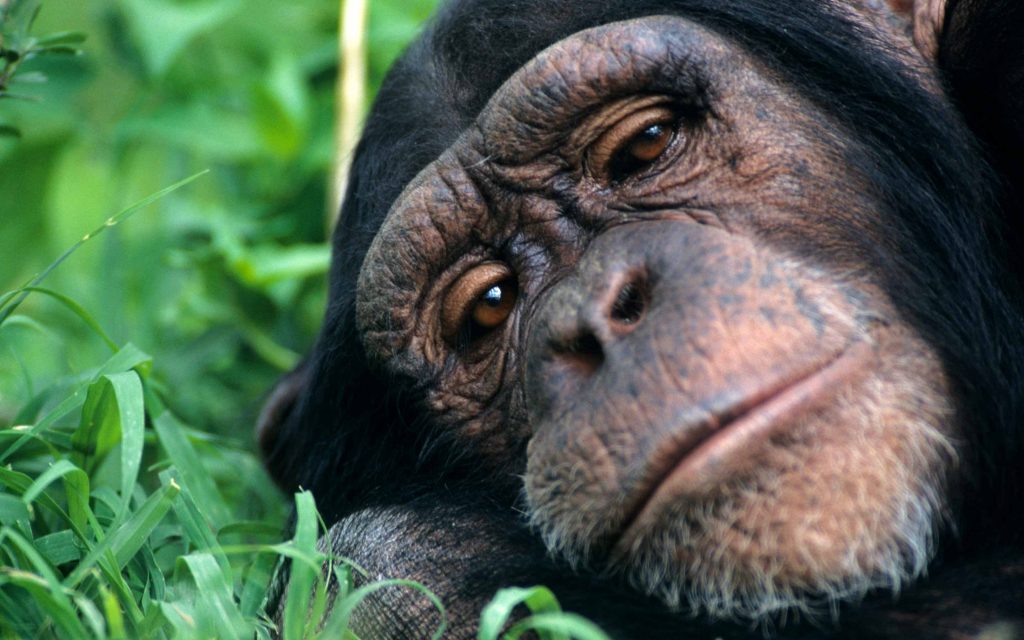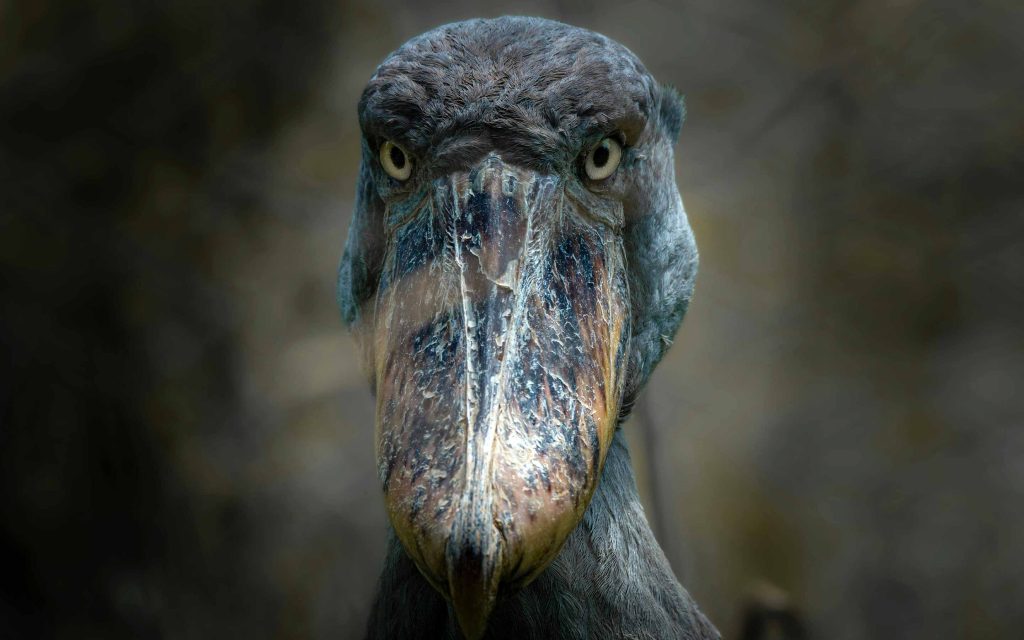African Secretary Bird
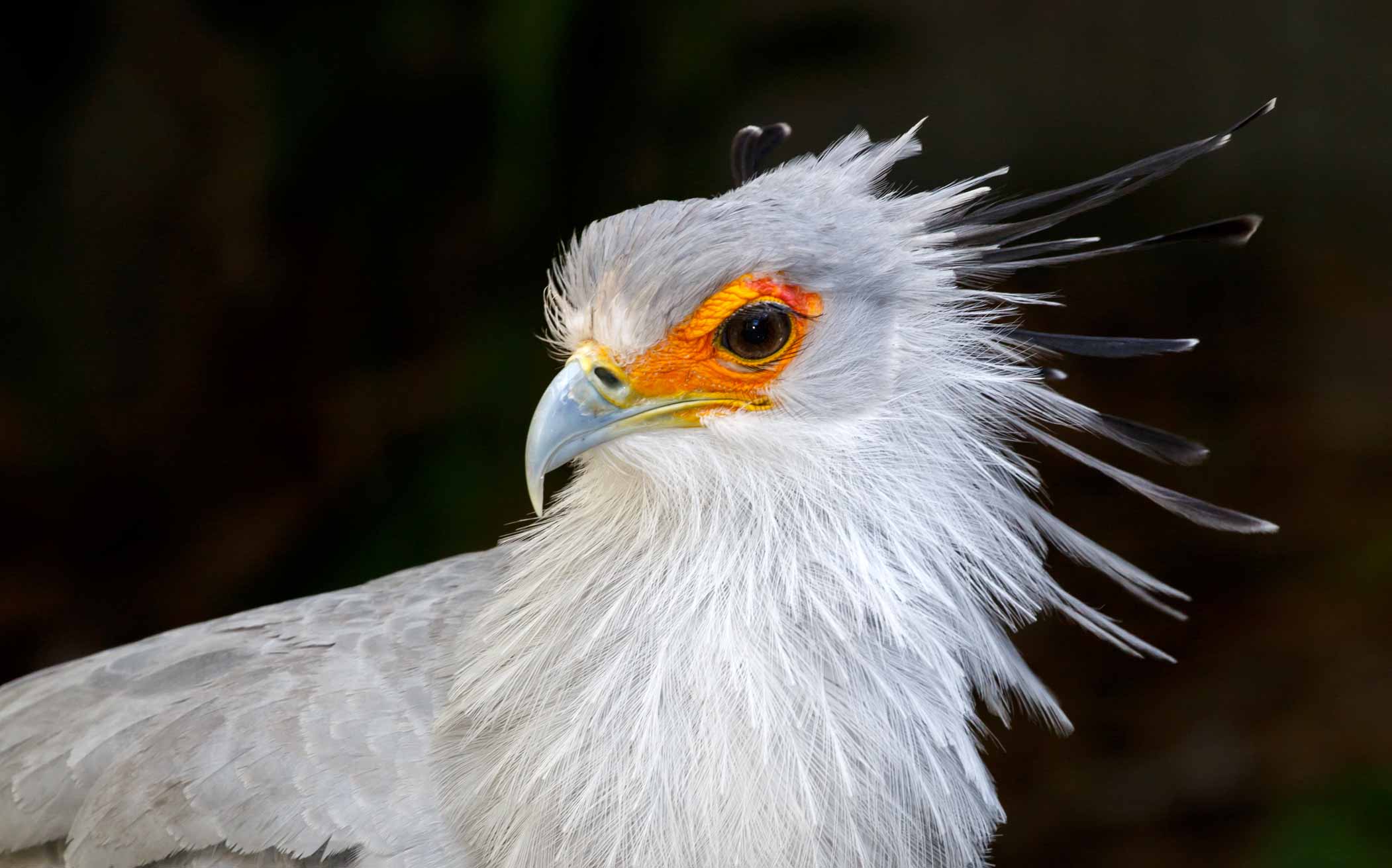
Overview
In the sprawling savannas and open plains of Africa, there exists a bird unlike any other, striding gracefully across the landscape, its presence unmistakable. With a distinctive crest of long, quill-like feathers resembling the quills of a secretary behind its head, the African Secretary Bird (Sagittarius serpentarius) stands as one of the most iconic and unique birds of prey on the continent. Its unusual combination of raptor-like hunting prowess and stilt-like legs makes it a fascinating subject for both scientists and wildlife enthusiasts alike. But there is much more to the Secretary Bird than meets the eye; this avian predator plays a crucial role in Africa’s delicate ecosystems, captivating both for its beauty and its vital ecological significance.
Scientific Classification
- Kingdom: Animalia
- Phylum: Chordata
- Class: Aves (Birds)
- Order: Accipitriformes
- Family: Sagittariidae
- Genus: Sagittarius
- Species: Sagittarius serpentarius
Description
The African Secretary Bird is a large bird of prey, but unlike other raptors such as eagles or hawks, it hunts primarily on foot. Standing at an impressive height of up to 1.3 meters (4.3 feet), with a wingspan stretching up to 2.1 meters (6.9 feet), its long, crane-like legs are one of its most defining features. These legs are not only built for speed but are also formidable weapons, delivering powerful, stomping blows to subdue prey.
Physical Characteristics
- Body: Covered in light grey feathers, the Secretary Bird’s body is sleek and agile. Its underparts are mostly white, with a black patch on the front of its wings and tail.
- Head: Its most striking feature is the crown of long black feathers at the back of its head, resembling quills tucked behind the ear—hence its name, as early European settlers likened this to a secretary’s quill pen. Its face is adorned with bright orange or red bare skin around the eyes, giving it a sharp, alert expression.
- Legs: The legs, long and powerful, are covered with thick scales, which provide protection against bites from venomous snakes. The bird uses these legs to stamp out its prey with incredible force.
- Beak and Eyes: Like other raptors, the Secretary Bird has a hooked beak, perfect for tearing into flesh, and its piercing yellow eyes help it spot potential prey from a distance.
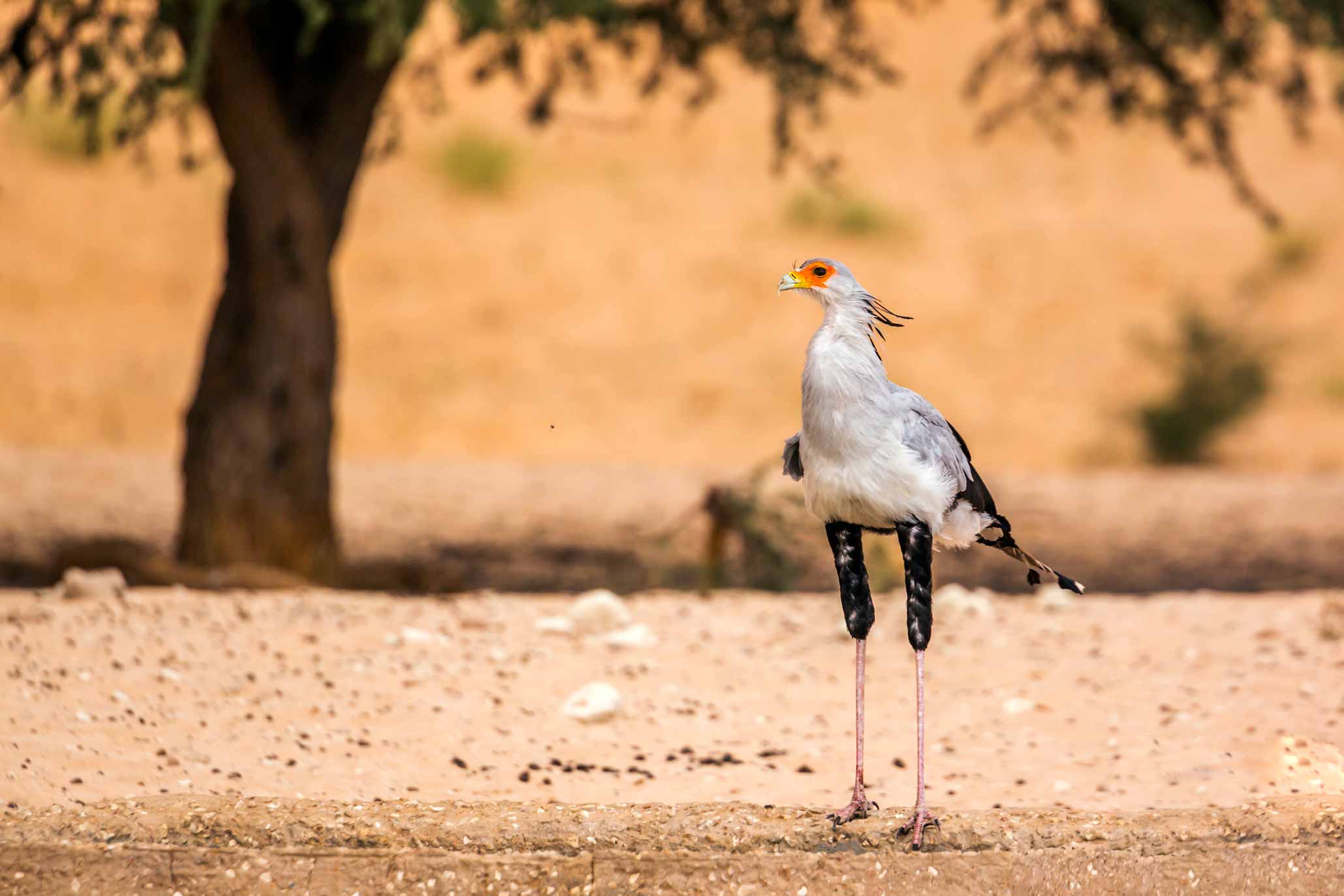
Behaviour
The African Secretary Bird is a terrestrial hunter, a trait that sets it apart from most other birds of prey. While it has the ability to fly and does so when necessary (especially when threatened), it spends the majority of its time on the ground, walking through the grasslands in search of food.
Hunting Style
Its hunting method is truly one of the marvels of the natural world. The Secretary Bird covers great distances each day, sometimes walking over 30 kilometers (19 miles), as it searches for prey. It has a varied diet, which includes insects, small mammals, and birds, but its primary claim to fame is its prowess as a snake hunter. The bird will flush out snakes from underbrush or chase them down, using its strong legs to stomp them to death. Remarkably, the Secretary Bird can kill a snake with just a few precise blows, often targeting the head to ensure a quick kill.
Diet Includes
- Venomous and non-venomous snakes
- Small mammals like hares and rodents
- Insects such as grasshoppers, locusts, and beetles
- Birds and their eggs
- Amphibians and reptiles
The Secretary Bird’s ability to take down venomous snakes such as cobras has made it a revered figure in African folklore, often seen as a protector of crops and livestock from deadly snake bites.
Reproduction and Lifespan
Secretary Birds are monogamous, forming long-term pair bonds that last for many years. During mating season, pairs perform elaborate courtship displays, which include aerial acrobatics, where they lock talons in mid-flight and spiral toward the ground.
Nesting and Breeding
- The breeding pair typically builds a large nest high up in an acacia tree or on top of other tall vegetation. The nest is made of sticks and can grow to be over 2.5 meters (8 feet) wide after years of use and maintenance.
- The female lays between 1 to 3 eggs, which she incubates for about 45 days. Both parents take turns guarding and feeding the chicks.
- The chicks are covered in white down and are initially helpless. After about 6 to 7 weeks, they begin to fledge, though they remain reliant on their parents for several months as they learn to hunt.
Lifespan
In the wild, Secretary Birds can live up to 10 to 15 years, though they have been known to live longer in captivity.
Habitat and Geographical Distribution
The African Secretary Bird is native to sub-Saharan Africa, thriving in open habitats such as savannas, grasslands, and lightly wooded areas. It avoids dense forests and prefers flat, open landscapes where it can spot prey from a distance.
Countries and Regions
- East Africa: Commonly found in countries like Kenya, Tanzania, and Ethiopia, where the vast plains of the Serengeti and Maasai Mara provide ideal hunting grounds.
- Southern Africa: Particularly abundant in South Africa, Botswana, Namibia, and Zimbabwe, often seen in national parks such as Kruger and Kgalagadi.
- West and Central Africa: Less common in these regions, but still present in countries like Chad, Niger, and Cameroon, where savanna ecosystems dominate.
Secretary Birds are highly territorial, with pairs occupying large home ranges that they fiercely defend from intruders.
Conservation Efforts
Despite its formidable nature and wide range, the Secretary Bird is facing increasing threats in the wild. According to the IUCN Red List, the species is currently classified as “Endangered” due to habitat loss, human encroachment, and agricultural expansion.
Conservation Initiatives
- Protected areas such as national parks and wildlife reserves are crucial for the survival of the species. Parks like Kruger National Park in South Africa and Serengeti National Park in Tanzania are critical strongholds for the Secretary Bird population.
- Organizations like BirdLife International are working on habitat restoration and public awareness campaigns to reduce human-wildlife conflicts.
- Conservationists are also conducting research on Secretary Bird breeding habits and population dynamics to better understand how to support their recovery.
Facts
Interesting facts about The African Secretary Bird (Sagittarius serpentarius).
The bird’s name comes from the long, quill-like feathers that resemble the quills once carried by office secretaries.
Unlike other raptors that swoop down from the air, the Secretary Bird hunts on foot, using its powerful legs to kill prey.
They have a diverse diet, including snakes, small mammals, birds, and insects, but are famous for their snake-hunting skills.
It stomps on the snake with its long legs, delivering rapid and forceful blows until the snake is incapacitated or dead.
Yes, they are classified as “Endangered” due to habitat loss and human disturbances.
They can be seen in the savannas and grasslands of East and Southern Africa, particularly in parks like Kruger and Serengeti.
Yes, despite spending most of their time on the ground, they are strong fliers and can soar to great heights when necessary.
In the wild, they typically live for 10 to 15 years, though they can live longer in captivity.
As predators, they help control populations of snakes, rodents, and insects, making them vital to the balance of the ecosystems they inhabit.
Generally, Secretary Birds avoid human interaction and are not aggressive unless threatened.
Other Animals
Explore fauna in Africa.

